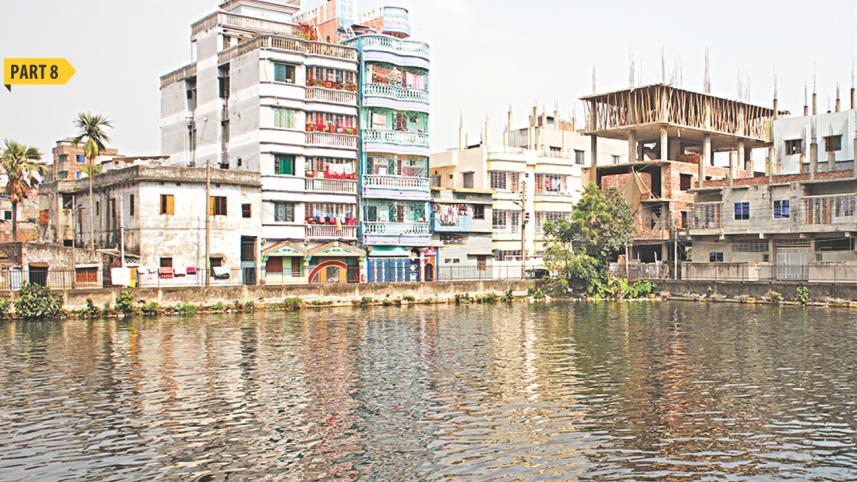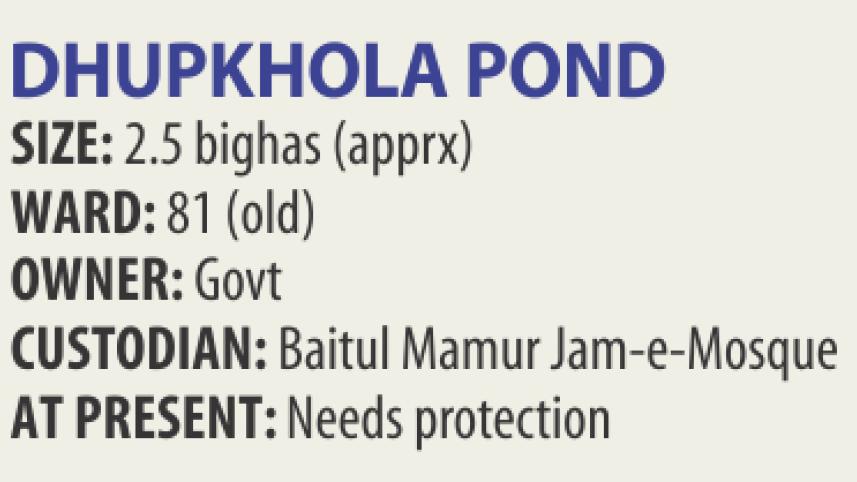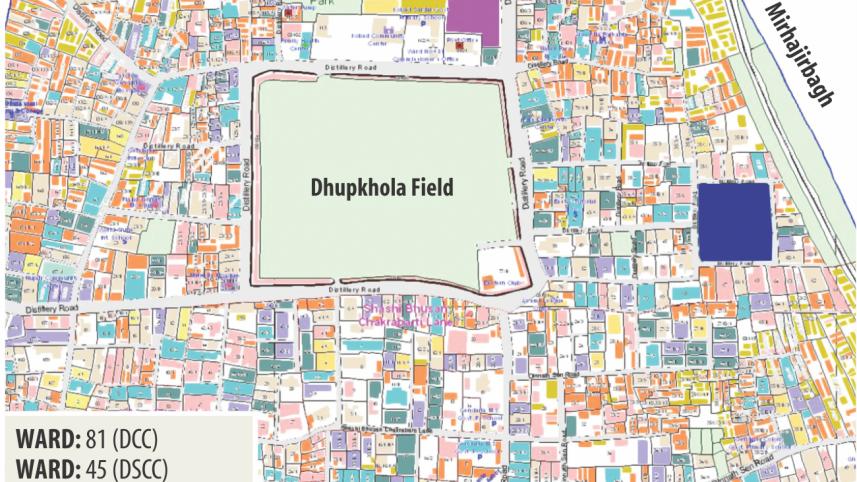Surviving the test of time

During the British period, a pond was dug up in the capital's Dhupkhola. It was shaped like a “dui anna” -- a currency unit formerly used in the Indian subcontinent.
The around 200-year-old water body was fondly called “Dui Ani Tola” by the locals. And just like the coin, it was also shaped like a diamond.

The water body was dug up as per the order of Jamindar (landlord) Gunendra Krishna Roy Bahadur of Bhagyakul (now in Munshiganj).
It has been said that Gunendra wanted people of the neighbourhood as well as the nearby areas to have a place that would cater for the households of the communities.
Along with that, the water body also offered a much-needed respite to the residents and allowed them to relax by its banks and spend time with their families and friends.
Gunendra also donated around 52 bighas of land to the people of the area that included land for the dhopas (washers), a graveyard and a sports club named, East-End Club.
The pond still exists in Dhupkhola. It is near Dhupkhola Math (field), built on the donated land.
The area falls under Ward-81 (old) of the Dhaka City Corporation, which is now Ward-45 of the Dhaka South City Corporation. The total area of the ward is 0.543 sq km.
Over the years, the pond went through numerous twists and turns in the course of its history.
First, it was auctioned off in order to pay off the Jamindar's debt. The water body was then purchased by a lawyer from Faridabad, Monmoth.
The lawyer renovated the ghat (landing spot) on the eastern side of the water body and donated the pond to the community.
Meanwhile, it was under a constant threat of encroachment. Also, people from the nearby houses kept on dumping waste in the water body.
In 1962, late SM Azad, a resident of the area, filed a case with SDO (sub-divisional office) court, against the illegal grabbing of the pond. After the court's verdict, the pond became a property of the government.
Even in the early 90s, some influential persons again tried to grab a portion of the pond. But locals put up a resistance and the water body was saved, said a resident of the area.
Then in 1995, to protect the water body from being encroached, former Dhaka City Corporation mayor Mohammad Hanif constructed boundary walls with grill fences around it.

Afterwards, in 2010/11, the Dhaka deputy commissioner's office gave the custody of the water body to the Baitul Mamur Jam-e-Mosque, located next to the pond.
“We are maintaining the pond ever since,” said Kabir Choudhury, joint secretary of the mosque committee.
The around 2.5-bigha water body is still there but it needs protection as it came under threat of encroachment numerous times, he said.
Kabir said they cultivate fish in the water body and with the income they generate from selling fish, they maintain the mosque and the pond.
“But at times it gets difficult to keep the water clean as residents from the nearby houses keep on dumping waste in the pond,” he alleged. Also, drainage and sewage lines go into the pond directly, polluting its water.
The depth of the pond is around 35 feet, he said.
“Around 30 years ago, there used to be swimming competitions in the pond,” he said. “On holidays, we would gather by the water body to root for the swimmers. There would be a community atmosphere surrounding the area.”
“You should have seen the area back then. It was like a festival. Even national swimmers like Mosharraf Hossain used to drop by to enjoy the competition,” said a nostalgic Kabir.
During a recent visit, this correspondent saw a group of youths swimming in the water body.
Rouf Siam, a fifth-grader, said he learnt to swim in the pond. Standing next to him were his friends, ready to jump into the water body. “All of us learnt to swim here,” they shouted in unison.
But due to its present condition, the pond is mostly used by the slum dwellers now, said locals.
Mohammad Malek, a rickshaw-puller, said they use the pond for bathing, while the women for household work.
While talking to the residents of the area, many said although the pond is still alive, the authorities concerned should take immediate steps to save it from the threat of encroachment and pollution.
(Edited by Hasan Meer)




 For all latest news, follow The Daily Star's Google News channel.
For all latest news, follow The Daily Star's Google News channel.
Comments